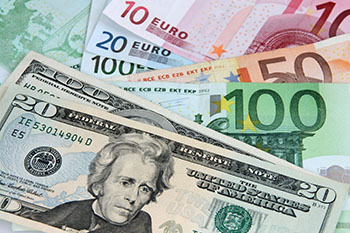
The US dollar rose to its highest level against major currencies in the past five weeks on Monday after Federal Reserve officials noted the likelihood of continued aggressive monetary tightening ahead of a major central bank meeting at Jackson Hole.
The euro fell after Russia announced a three-day cessation of gas supplies to Europe through the Nord Stream 1 gas pipeline, which negatively affected the energy crisis in the region.
The Chinese yuan fell to a two-year low after the central bank cut key lending rates.
The Australian and New Zealand dollars pulled back strongly from five-week lows due to higher commodity prices.
US dollar index that measures it against six major currencies, including the euro, rose to 108.26 for the first time since July 15 early in the Asian session before trading at 108.12.
It rose 2.33% last week, its best weekly run since April 2020, as Fed policymakers say more needs to be done to moderate high inflation.
One of the latest statements was made by Richmond Fed President Thomas Barkin, who said that central banks are seeking faster and faster rate hikes.
“Fed speakers have been stressing the message that more rate hikes are coming given the fight against inflation has not yet been won,” rattling markets ahead of Jackson Hole on Aug. 25-27, amid growing expectations for Fed Chair Jerome Powell to stress that tightening is “still a long way from the end,” Rodrigo Catril, senior FX strategist at National Australia Bank, wrote in a client note.
Learn how to trade popular currency pairs with Top Forex Brokers
Money markets are currently indicating that a half-point rate hike is slightly more likely than 75 basis points.
The yield on the benchmark 10-year US Treasury exceeded 3% on Monday.
Against the Japanese currency, the dollar rose to 137.44 yen, the highest since July 27.
The dollar edged up to 6.8308 yuan in trading for the first time in two years after the People’s Bank of China cut base rates on one- and five-year loans and unexpectedly cut other key borrowing metrics last week.
Against the offshore yuan, the dollar hit 6.8520, also the highest in two years.
The heavily commoditized Australian dollar rose 0.39% to $0.6902, rebounding after falling to $0.68595 as iron ore rose more than 2% in Dalian and copper also rose.
The New Zealand dollar rose 0.4% to $0.61995 after falling to $0.61675 late last week.
The euro fell to $1.0026 before bouncing back to $1.0040.
Sterling remained at about the same level of $1.18325, staying close to Friday’s low of $1.17925.
Bundesbank President Joachim Nagel said the German economy, one of those highly dependent on Russian gas supplies, will likely suffer a winter recession if the energy crisis continues to develop.
He also added that if a recession in Germany becomes more possible, the European Central Bank should continue to raise rates to fight inflation.
Subscribe for our newsletter
Get Forex brokers reviews, market insights, expert analytics and education material right into your inbox for free!